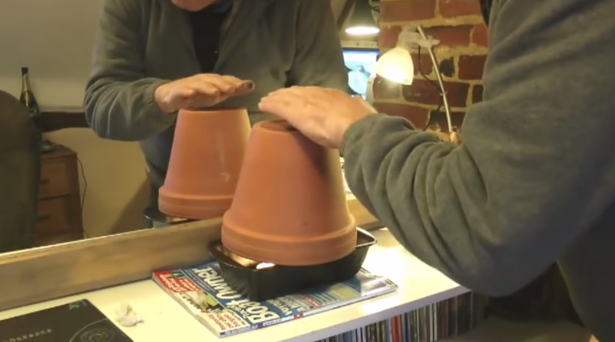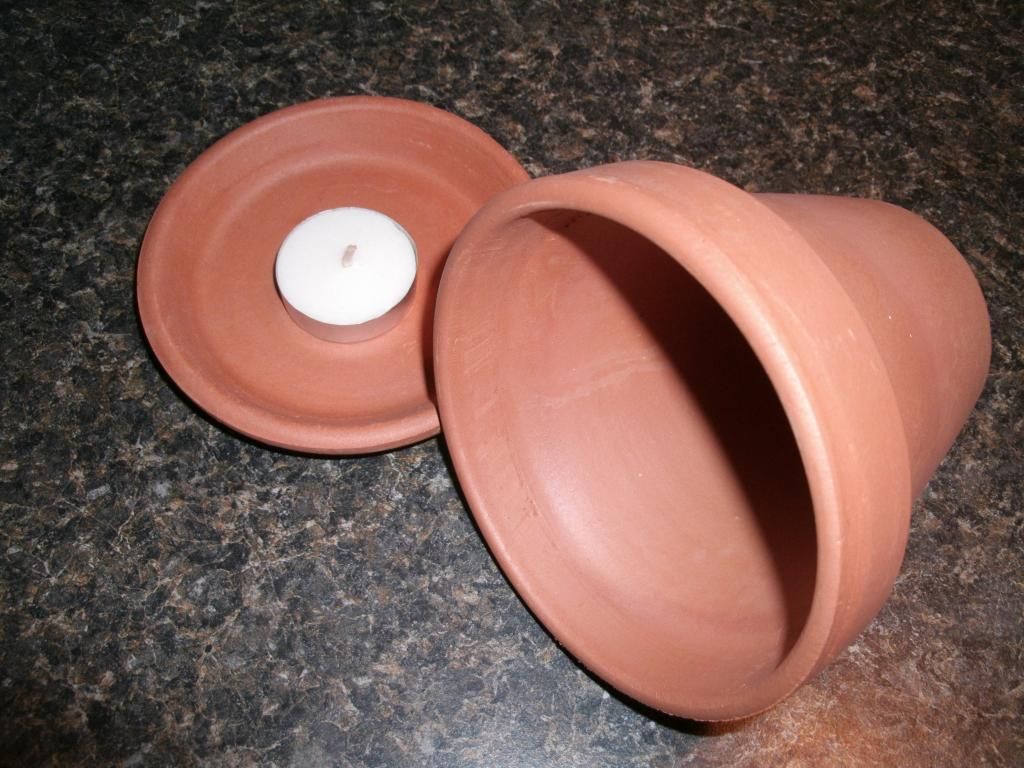|
|
Post by Daryl on Dec 2, 2014 19:07:53 GMT -8
Have you built one? I have a ceramic tea candle wax warmer that puts out a little bit of heat once it gets going, especially if I have it lit for hours. I'm going to try this experiment shortly.
Here is an example of the many out there: 
|
|
|
|
Post by aparker on Dec 2, 2014 22:41:43 GMT -8
Reading the comments on the various youtube videos and blogs that have discussed this can be very entertaining. It usually deteriorates rapidly into a shouting match between overunity techno-evangelists and self-styled debunkers. Usually lost to the philosophical tirades is discussion of practical application of the design and its limitations.
I am interested in seeing bells being integrated with candles, wax stoves and oil/kerosene lamps. I had purchased a small wax stove I was going to experiment with this Winter, but it was misplaced during a camping excursion last Summer. Bummer.
I look forward to reading your observations.
|
|
|
|
Post by Daryl on Dec 3, 2014 5:48:57 GMT -8
I have been doing a little bit of reading and found a wide variety of answers to how much heat a camdle emits. The amounts vary between 30-100 watts. I can say this for sure, tea candles produced enough heat to cause my wax warmer to crack in the top bowl. Clay could be an awesome little battery. For a candle burner like me, this is a great way to harness the heat and not waste it.
|
|
gjh42
Junior Member
 
Posts: 61 
|
Post by gjh42 on Dec 3, 2014 8:10:34 GMT -8
This could make a nice hand warmer to concentrate the candle's heat in one low-temp radiating spot. There is no way it could heat a whole room any better than the candle alone. As a bathroom warmer it might be somewhat effective, keeping the heat low and re-radiating it to the ceramic surfaces or people nearby.
|
|
|
|
Post by aparker on Dec 3, 2014 11:18:38 GMT -8
...or a foot warmer, under a desk or table.
I think that sizing might be an important consideration. If there is too much mass for the BTUs coming out of the candle/s, the surface of the pots may never radiate a comfortable temperature.
Perhaps adding an insulated cap on top would force more heat out the sides, if that is what you are looking for.
|
|
hpmer
Full Member
  
Posts: 240
|
Post by hpmer on Dec 3, 2014 17:50:24 GMT -8
I built one. Kinda disappointing, as it didn't throw out much heat at all. I think I used 3 nested clay pots. I may take it apart and take out one of them and see if it makes any difference. Cool idea, but I agree with the others, though. Not a lot of btu's to drive much heat.
|
|
|
|
Post by Daryl on Dec 3, 2014 19:37:16 GMT -8
Yeah, I'm not expecting to be off grid anytime soon from the power of a tea candle. I look at something and start to think. Not a good thing because a zillion different ideas start popping into my brain. So I have to try a few of the ideas or they eat away at me.
I am leaning more towards the one clay pot approach and go from there. Three seems a bit too much.
|
|
|
|
Post by patamos on Dec 3, 2014 22:45:51 GMT -8
Built a cabin last year. 600sq.ft main floor and 400sq.ft. upstairs.
Light clay walls; well insulated roof; windows where they ought to be. But no winter sun from Nov til Feb.
To everyone's amazement, the whole thing is heatable with 900watts via microhydro til the weather gets below 0c. Then the RMH gets fired up.
If candles can create up to 100watts... then they could be a good way to supplement.
I hear that most incadescent and halogen lights give off about 83% heat. Is the idea of enclosing the candle a way of converting the remaining 17% to heat as well?
|
|
|
|
Post by aparker on Dec 4, 2014 7:30:47 GMT -8
I hear that most incadescent and halogen lights give off about 83% heat. I remember reading that some clever European entrepreneur was relabeling banned incandescent bulbs as heat globes, to circumvent the EU's rules. I used to put an incandescent bulb, wrapped in aluminum foil, in the chicken coop when temperatures plunged well below freezing (below 0 Fahrenheit). I don't know if it made much of a difference and I gave it up once the hens were full size. Now that I am down to one 11-year-old, post-menopausal hen, I have been thinking about starting up again. I have some clay pots laying around and some old lamp hardware, so I think I might cobble together an electric mass heater that she can snuggle up to when it gets cold this Winter. |
|
|
|
Post by Daryl on Dec 4, 2014 7:43:23 GMT -8
Aparker, check out Alton Brown's DIY clay pot smoker. There are a ton of youtube videos on the topic.
*BTW, Alton opened my eyes to all the possibilities of using mass for heating. He's my heater hero.
|
|
|
|
Post by Daryl on Dec 11, 2014 16:53:52 GMT -8
I underestimated the difficulty of finding terracotta pots in the dead of winter. *giggling* We all have to start somewhere I guess. This 4.25" pot is all I could scrounge up on a two day search.  |
|
|
|
Post by Daryl on Dec 12, 2014 0:01:57 GMT -8
Yes, the clay pot heater does have some merit. I am actually kind of shocked at the results. The clay is quite hot. I'm chuckling at the fact this candle heater acts like a regular stove and follows the same principles of fire. I can't totally set the pot on top of the tray otherwise it cuts off the oxygen to the flame. The most intense heat is coming out of the drainage hole at the top. It's crazy. Like a mini Kuznetsov. Again, I'm not shutting off the heat anytime soon but I am going to continue to test these out. |
|
|
|
Post by Daryl on Dec 12, 2014 14:46:06 GMT -8
Got a heads up today about plated bolts and washers (zinc). Heating of plated metal can release toxic chemicals into the air.
|
|
|
|
Post by patamos on Dec 12, 2014 20:23:08 GMT -8
Ya zinc fumes are nasty headache creators.
This whole process of sending candle heat into mass reminds me of how 'mass enhanced U-value' works. Chatting recently with a Building Biologist friend, he mentioned that the standard heat load loss calculations for a 2x6 stud frame house with (so called) r-20 walls... grossly under-estimates the effect of heat storage and redistribution in buildings with mass walls. These buildings perform 70% better than anticipated by the calculations.
I guess much of the buzz about clay pots and candles is just how effectively the clay mass captures what little heat the candle gives off.
|
|
|
|
Post by Daryl on Dec 13, 2014 19:39:10 GMT -8
Ya zinc fumes are nasty headache creators. This whole process of sending candle heat into mass reminds me of how 'mass enhanced U-value' works. Chatting recently with a Building Biologist friend, he mentioned that the standard heat load loss calculations for a 2x6 stud frame house with (so called) r-20 walls... grossly under-estimates the effect of heat storage and redistribution in buildings with mass walls. These buildings perform 70% better than anticipated by the calculations. I guess much of the buzz about clay pots and candles is just how effectively the clay mass captures what little heat the candle gives off. Your Biologist friend is right on. My mind has been racing since reading your post earlier this morning. I sure do want to learn more about adobe dwellings, clay, stone, etc.
You mentioned capturing the heat. The tea candles are causing a discoloration in the clay after only 3 tests of different configurations. I have had to start using a firebrick as a base because the flower pot is too warm for a glass candle base. These little experiments are a trip.
Not sure if you can see the line of discoloration (my camera sucks): 
|
|